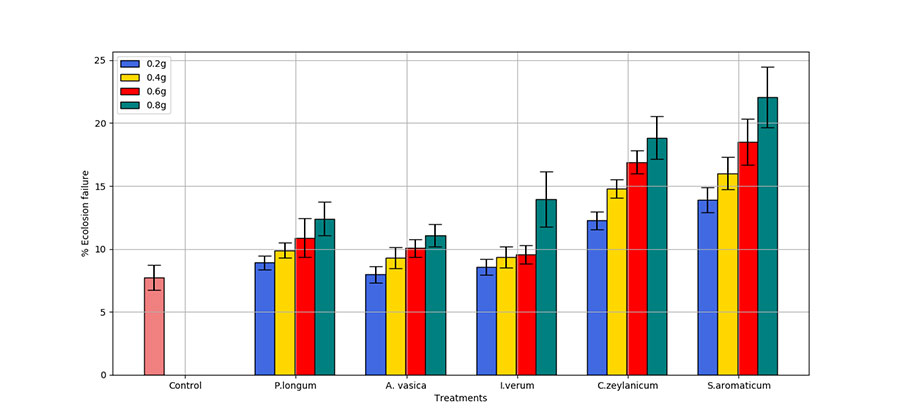


Indian Journal of Science and Technology
Year: 2020, Volume: 13, Issue: 16, Pages: 1648-1655
Original Article
Georgina J1∗, Ramani Bai M2 , Sam Manohar Das S3
1 Assistant Professor, Department of Zoology, Scott Christian College (Autonomous), (affliated to Manonmaniam Sundaranar University, Tirunelveli-12, Tamil Nadu), Nagercoil, Tamil Nadu, India
2 Associate Professor, Department of Zoology, Muslim Arts College, (affliated to Manonmaniam Sundaranar University, Tirunelveli-12, Tamil Nadu), Thiruvithancode, India
3 Emeritus Professor, Department of Zoology, Scott Christian College (Autonomous), (affliated to Manonmaniam Sundaranar University, Tirunelveli-12, Tamil Nadu), Nagercoil, India
∗Corresponding author:
Georgina J Assistant Professor
Department of Zoology, Scott Christian College (Autonomous), (affliated to Manonmaniam Sundaranar University, Tirunelveli-12, Tamil Nadu), Nagercoil, Tamil Nadu, India
Email: [email protected]
Received Date:01 May 2020, Accepted Date:13 May 2020, Published Date:08 June 2020
Background/Objectives: The toxic synthetic pesticides must be replaced by safe, cheap, non-toxic, target-specific insecticides such as natural plant products. This study is to investigate the ovipositional and eclosion inhibitory activities of five plant products against the pulse beetle, Callosobruchus maculatus infesting green gram (Vigna radiata). Method: Fine powders prepared from various parts of the plants Piper longum, Adhatoda vasica, Illicium verum, Cinnamomum zeylanicum and Syzygium aromaticum at various concentrations (0.2, 0.4, 0.6, 0.8 g) were added to 30 g of V. radiata seeds and two pairs of adult C. maculatus were introduced. Inhibitory effect of oviposition was studied by counting the number of eggs periodically (24, 48, 72, 96 and 120 hours) and the eclosion failure was also assessed. The control was similar to the experimental setup except for the absence of plant powders. Findings: The oviposition deterrence values which provide a comparison between the control and treatments showed S. aromaticum to be the strongest deterrent with a value of 85.77 followed by C. zeylanicum (76.33), P. longum (66.91), I. verum (62.96) and A. vasica (42.93) at 0.8 g. Also S. aromaticum recorded the highest eclosion failure of 22.06% and the lowest with A. vasica (11.08%) at 0.8 g. Statistical analysis showed an overall significant difference (p < 0.05) between the different plants, concentration wise. Though all the five selected plants exhibited insecticidal activity, S. aromaticum was the strongest in inhibiting oviposition and impairing larval growth of C. maculatus. Novelty: Previous works have demonstrated the insecticidal activity of the essential oils of S. aromaticum and C. zeylanicum but this study has shown that prepared powders of both these spices are quite effective at low concentrations, so can be easily used by farmers.
Keywords: Insecticidal; Oviposition deterrence; Callosobruchus maculatus; Syzygium aromaticum; Piper longum; Pest
© 2020 J, M, S. This is an open access article distributed under the terms of the Creative Commons Attribution License, which permits unrestricted use, distribution, and reproduction in any medium, provided the original author and source are credited.
Published By Indian Society for Education and Environment (iSee)
Subscribe now for latest articles and news.